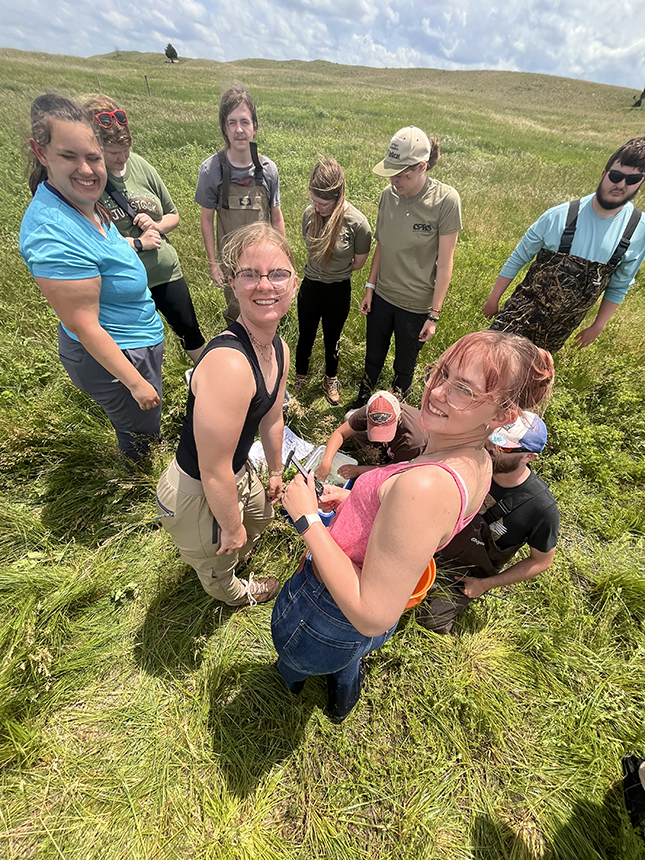Posted: 8/5/2024
Ferraro-led class on herp hoppers, crawlers and slitherers a hit
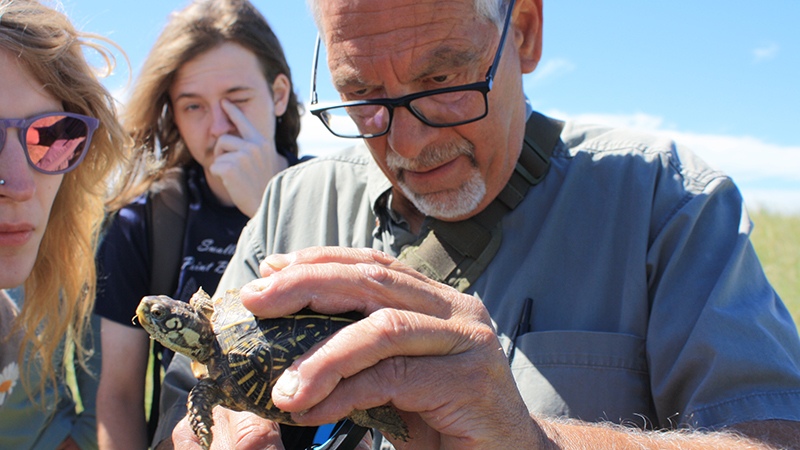
By Ronica Stromberg
Dennis Ferraro leads a boot camp with a waitlist to get in.
Now approaching 70 years old, the University of Nebraska-Lincoln professor teaches what he calls "herpetology boot camp" at the Cedar Point Biological Station in western Nebraska every summer. This year, he taught the four-credit course June 16 to July 5, 2024.
The course caps at 14 students, and the lucky undergraduates who get in spend 8 to 10 hours a day, six days a week, for three weeks learning about and catching snakes, frogs, turtles, lizards and salamanders. They microchip the amphibians, turtles and reptiles and track how the animals use the environment and fare in it.
Ferraro may catch and microchip rattlesnakes, but these undergraduates will not. Only graduate students in Ferraro’s one-credit "Safe Handling of Venomous Reptiles" class are certified to work with rattlesnakes.
In "Field Herpetology," the official name of Ferraro’s boot camp class, the herpetologist and conservation biologist teaches the proper techniques and tools to use to work with wild amphibians, turtles and reptiles.
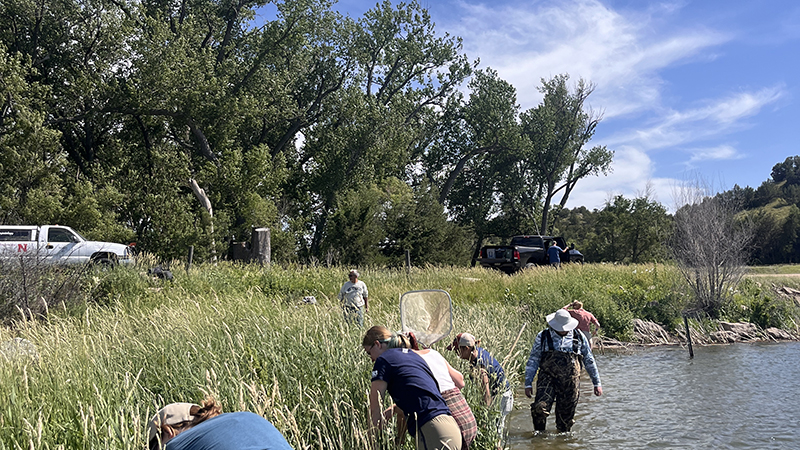
Students learn to catch snakes without grabbing them by the neck or the tail. Snakes can get hurt when grabbed by the tail, and like most animals, they don’t take kindly to being grabbed by the neck.
Instead of the neck grab, Ferraro teaches students to slip both hands under the body of the snake and support it.
"Cuddle its body, and then the snake is fine with it, and no one gets bit, but as soon as you touch them near their neck, they're going to turn and bite you," he said.
Techniques like this and tools such as microchips the size of rice, scanners and syringes are what Ferraro instructs students on for two to three hours per day before they set out to encounter the animals in the wild. Besides working at Cedar Point near Lake McConaughy, they take one-day trips to the Bessey National Forest in Halsey, Valentine Wildlife Refuge and the panhandle to learn about other species, like the horned lizards in Kimball.
Students taking the class are usually pre-veterinarian majors or in zoo care or fishery and wildlife conservation. Ferraro said the class gives them an edge with employers like the U.S. Fish and Wildlife Service and Nebraska Game and Parks Commission. He estimated that half of the biologists at Game and Parks were once students of his in the 35 years he’s taught at Nebraska.
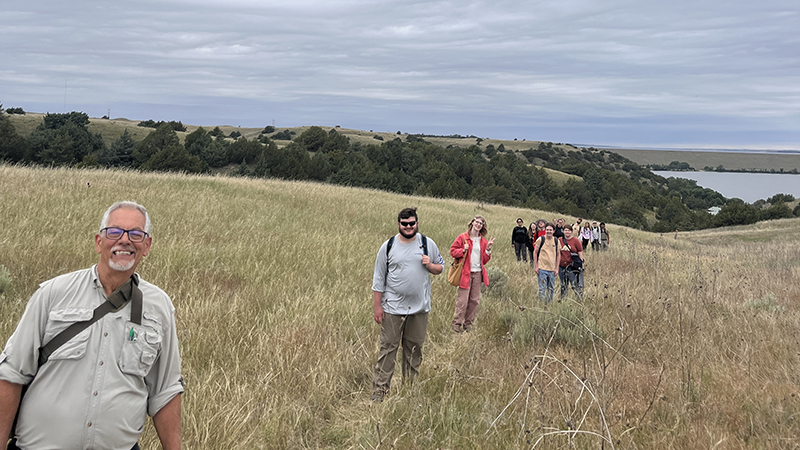
Ferraro is a popular and well-known teacher, having won 16 teaching awards at the University of Nebraska-Lincoln. His Field Herpetology class draws students from other states even. In 2023, he had one student from Kansas and one from Arizona.
This summer, 20 students tried to sign up for the class, normally capped at 14. One student dropped the class and was replaced, two extra students gained admittance, and three students had to be turned away.
Megann Timm, a senior majoring in fisheries and wildlife, said she found the class hard but she enjoyed it and expects to use what she learned in future work. She encouraged other students considering taking the class to be ready.
"It is very like, you got to pay attention. 'Learn this. Watch me do this. Do it yourself,'" she said. "So, you do kind of have to be on your A game, especially when you're in the field because you are working with live animals and actual techniques. So, it's definitely very boot camp-ish."
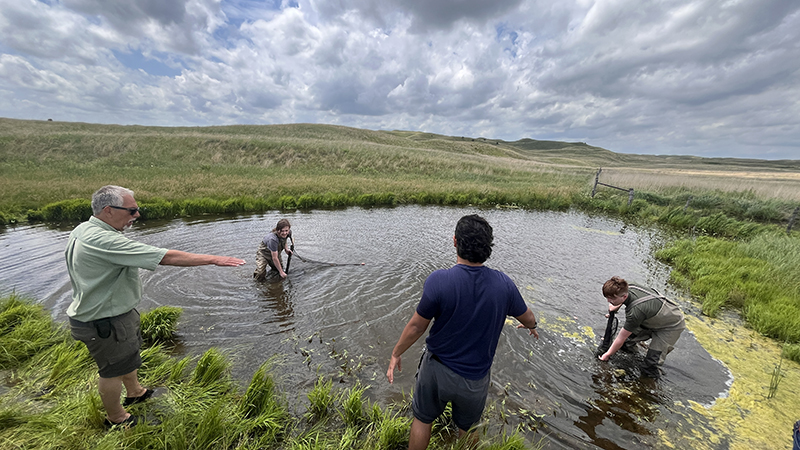
Ferraro said field herpetology classes are sparse, and Nebraska lacked one from 1994 to 2018, when he started it up again. Formerly, his instructor in graduate school, John Lynch, had taught the class every other year from 1977 to 1993.
A change in the class since then is the increased use of technology, which Ferraro said has improved the class.
"I have gotten more and more enthused about it and able to refine it and able to change it with the changing apparatus," he said.
At Cedar Point, he has a lab equipped with a surgery light and anesthesia machine. Following protocol of the Institutional Animal Care and Use Committee, Ferraro and graduate students put all animals under before performing surgery on them.
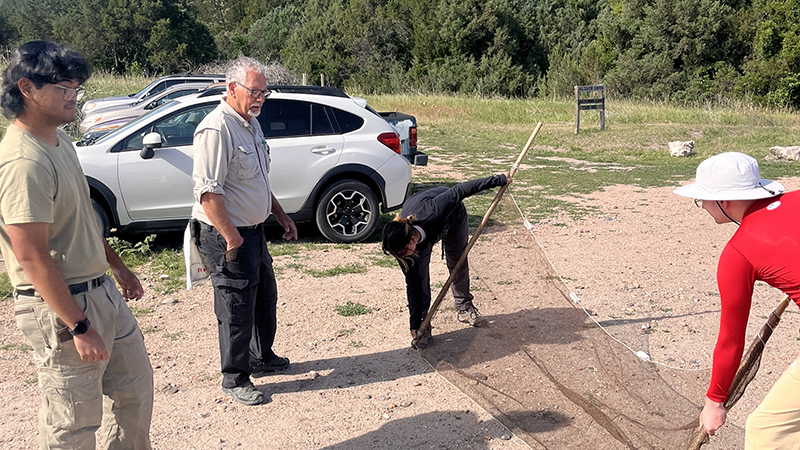
These trained students help perform surgery to insert a transmitter in animals for remote tracking. Students in the Field Herpetology class do not perform surgeries but may get to see Ferraro perform emergency surgery.
They saw one such emergency case this summer when a box turtle arrived on the first day of class. The victim of a hit-and-run, the turtle had been struggling to cross Highway 2 when a passerby came upon the scene. Seeing the turtle's damaged shell and slower-than-a-turtle pace, the woman called Game and Parks. Employees there referred her to Ferraro at Cedar Point, and she brought the turtle in.
"If it was injured by a coyote or naturally, I would say, 'Put it back. That's nature,' but since it was hit by a car, I feel like, 'OK, people made this injury. This person's going to try to counter that injury,'" Ferraro said.
He performed surgery, and the turtle recovered in the following six weeks and was returned to the wild. Ferraro said pre-veterinarian students were particularly enthusiastic about the "added bonus" of witnessing reptile surgery in class.
Students unable to get into Field Herpetology this summer can perhaps try again next year or in untold years to come.
"I do not ever plan to retire,” Ferraro said. “I love what I do and want to keep going as long as I can make a difference by teaching and passing on my passion for the conservation of the natural world."
